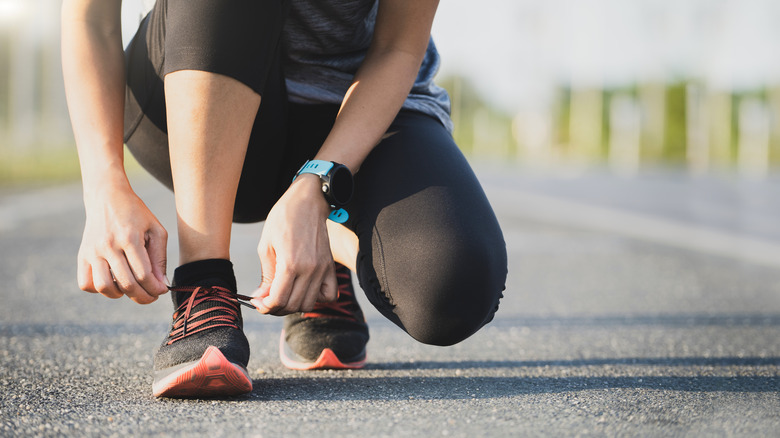What Happens To Your Body When You Get A Sprain
Sprains are as common as they are unpleasant. In fact, over a million people go to the doctor for ankle sprains each year. With this in mind, it may not be a surprise that the ankles are among the body parts most likely to be injured, with sprains comprising 75% of these injuries. Although ankle sprains are common, that does not mean that they are harmless; over 40% of ankle sprains may result in chronic problems (per American Academy of Family Physicians). Some of these chronic problems could include pain, joint instability, and arthritis (per Mayo Clinic).
But while ankles are the most commonly sprained body part, they are not the only body part vulnerable to spraining. According to Mayo Clinic, sprains can also happen to the knee, wrist, and thumb. Sprains involve the tearing or stretching of ligaments that hold together the joint of the sprained body part. According to Heiden Orthopedics, this typically happens when you twist, roll, or turn a body part in an improper way. Either way, sprains often result in a "pop" in your joint, followed by pain, swelling, bruising, and difficulty moving the joint in question.
This is how to prevent sprains
In order to prevent sprains, you may want to avoid situations in which they commonly occur. An ankle sprain may occur when you land improperly from a jump, or exercise or walk on a slippery or uneven surface. Meanwhile, knee sprains may be caused by pivoting during physical activity. Wrist sprains may result from falling onto an outstretched hand, while thumb sprains may result from overextension during racquet sports (per Mayo Clinic).
Exercising when you are fatigued may increase your risk of a sprain, as tired muscles provide less support to joints. You may also be more prone to sprains if you wear poorly fitted footwear or use poorly maintained sporting equipment, according to Mayo Clinic.
The National Institutes of Health (NIH) recommends eating well and exercising regularly to maintain strong muscles, and stretching or otherwise warming up before you exercise. Only engage in a sport if your body is properly conditioned to do so. The NIH also advises to run only on flat surfaces, and to take steps to avoid falling, such as by putting salt on icy spaces on your sidewalk.


